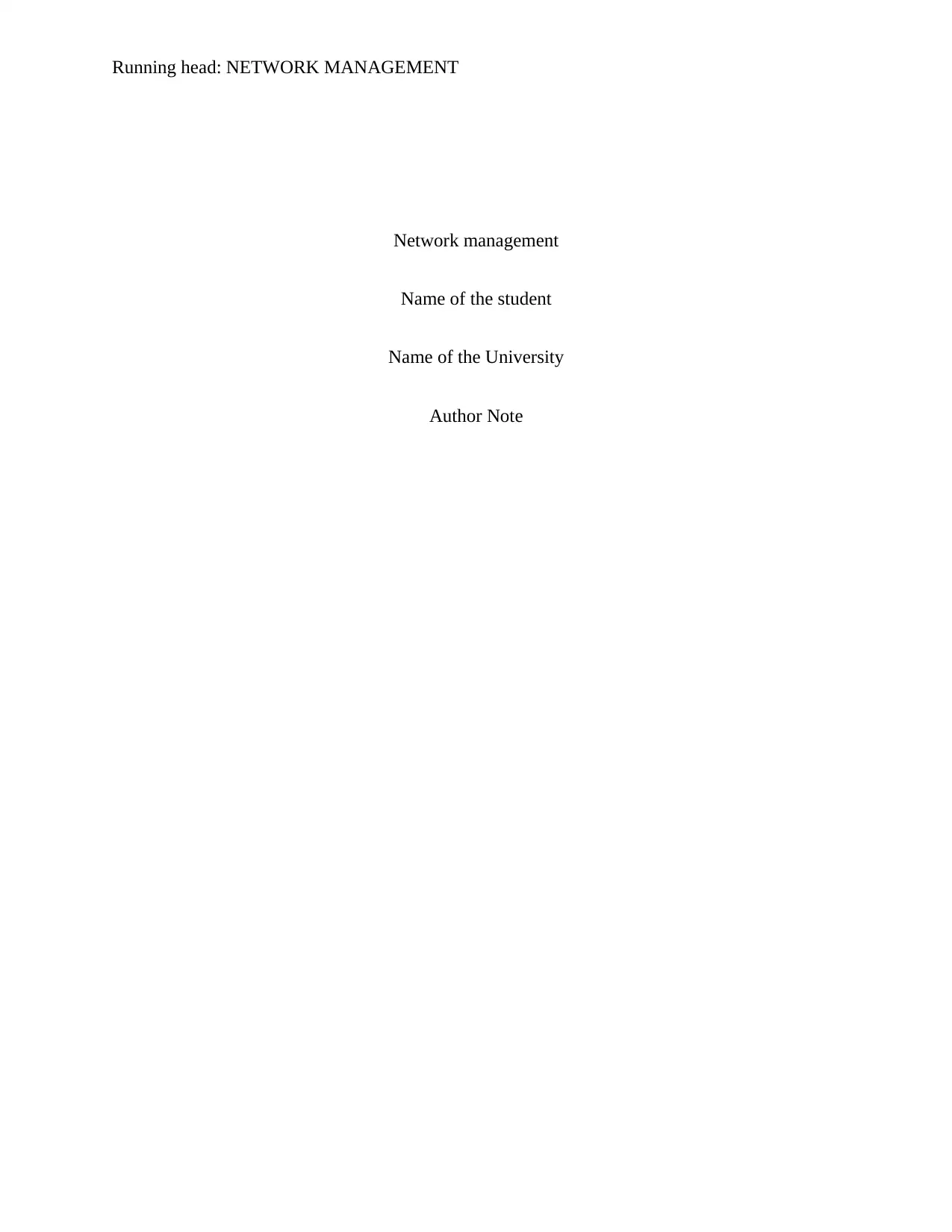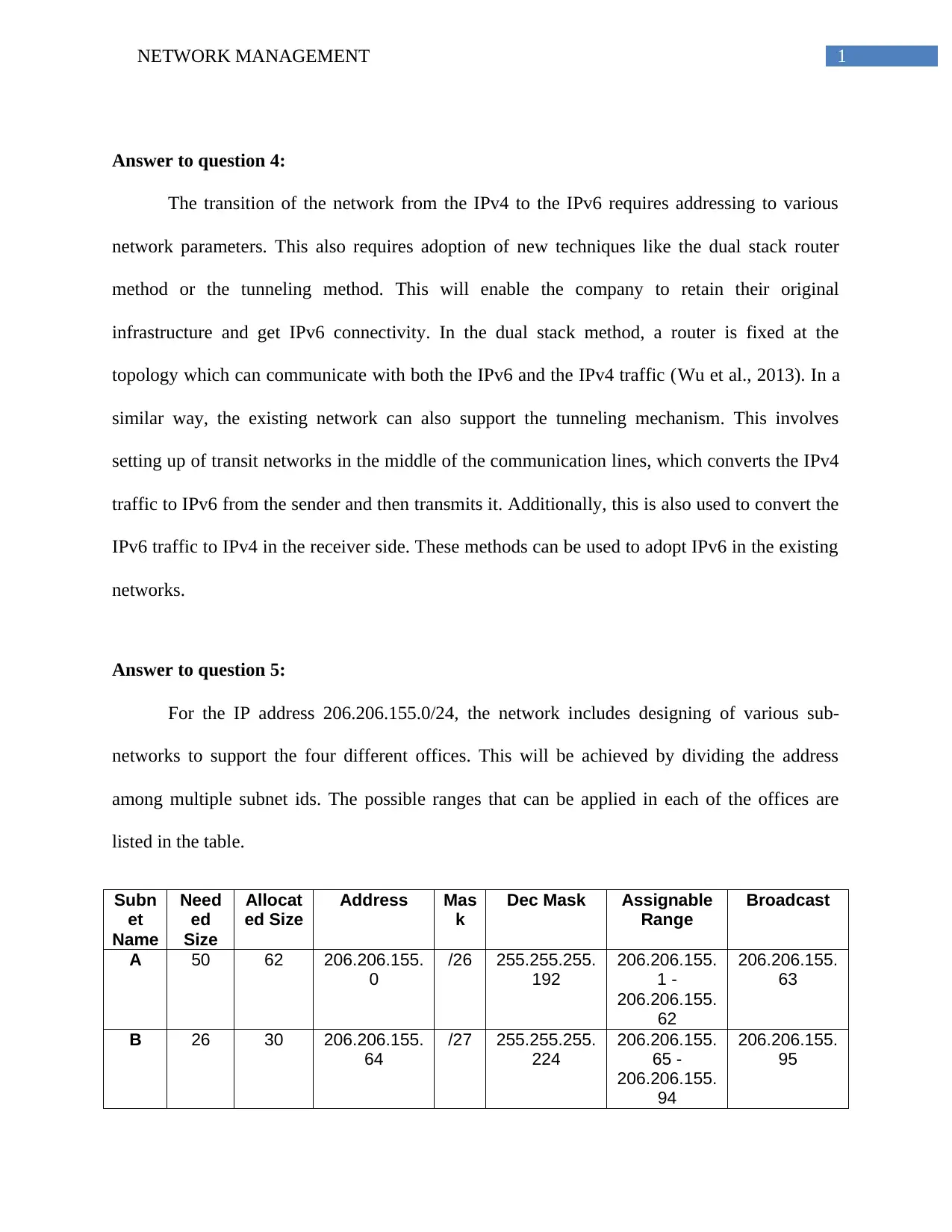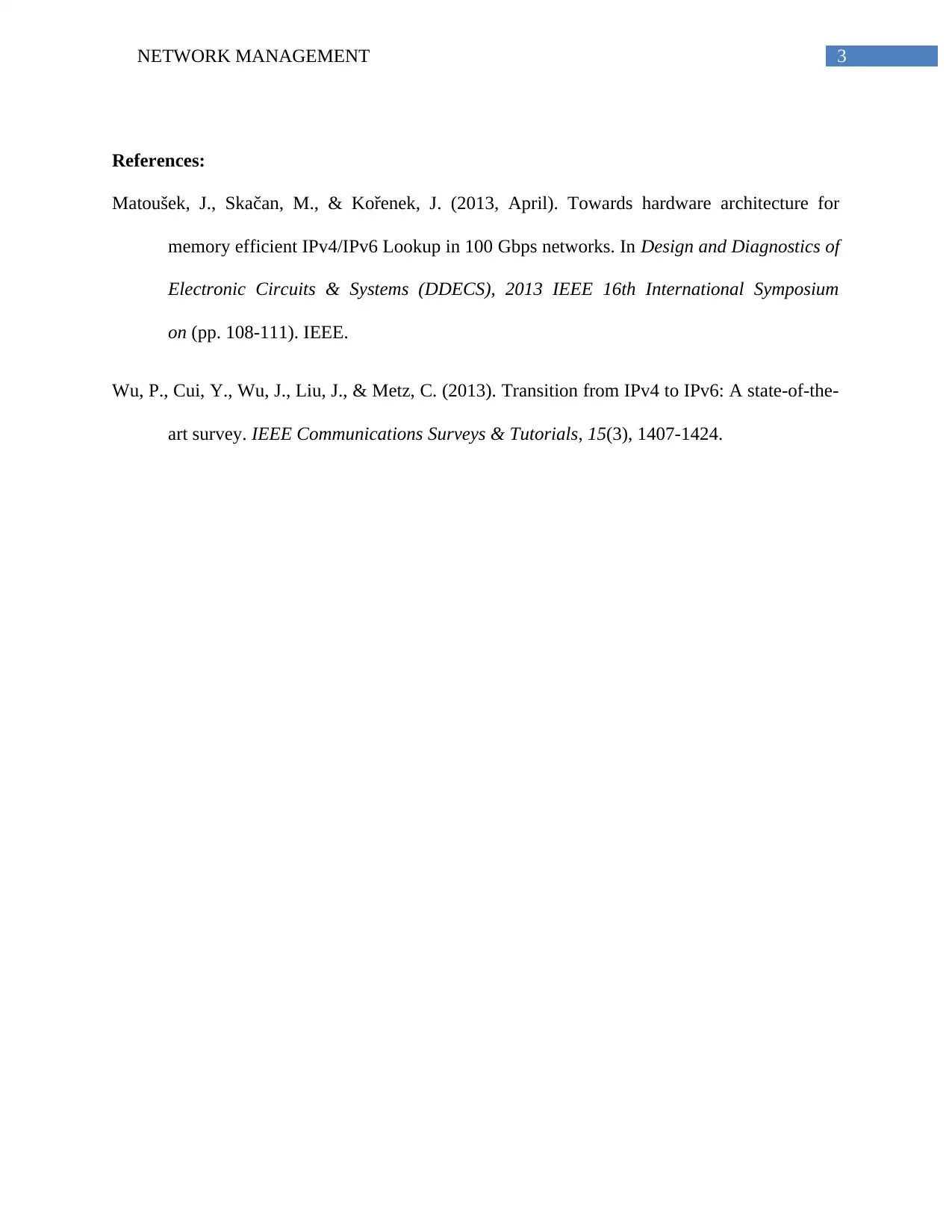Network Management Homework: IPv6 Transition and Subnetting Analysis
VerifiedAdded on 2020/04/13
|4
|401
|76
Homework Assignment
AI Summary
This document presents solutions to a network management assignment focusing on the transition from IPv4 to IPv6 and subnet design. The solution to question 4 discusses the methods for IPv6 transition, including the dual stack router method and tunneling method, enabling companies to maintain existing infrastructure while achieving IPv6 connectivity. Question 5 addresses the design of sub-networks for four different offices using the IP address 206.206.155.0/24, detailing the allocation of address ranges, subnet masks, and assignable IP address ranges for each office. The solution includes a table summarizing the subnet names, required sizes, allocated sizes, address masks, decimal masks, assignable ranges, and broadcast addresses. The document references relevant research papers that support the solutions provided.
1 out of 4










![[object Object]](/_next/static/media/star-bottom.7253800d.svg)